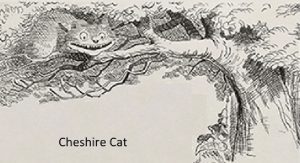 राजविद्या राजगुह्यं पवित्रमिदमुत्तमम् ।
राजविद्या राजगुह्यं पवित्रमिदमुत्तमम् ।
प्रत्यक्षावगमं धर्म्यं सुसुखं कर्तुमव्ययम् ॥ — 9.2, BG.
[This is the Sovereign Knowledge, the Sovereign Profundity, the best sanctifier; directly realizable, righteous, very easy to practice and imperishable.]
What is this world that is available for our experience?
“The world is a ‘superimposition’ (adhyAropa). In other words, it merely appears to be present but does not really exist. It is like ‘casting forward’ a non-existing or unreal “form” (objects) onto the Eternal, Immutable and Real ‘Substratum’ (adhisThAna) or the Supreme Self,” avers the Advaita Vedanta. Because of our inherent inability to know what “exactly” out there, our intellect ‘confabulates’ what could be present out there and ‘externalizes’ the imagined ‘form’ as a projection.
Shankara in his introduction to the Vedanta aphorisms (sUtra-s) explains to us that this ‘superimposition’ is natural (naisargika) to us – i.e., it exists from our birth itself. Left to itself uninvestigated, adhyAsa seems to have no locatable or known beginning-point (hence, anAdi); nor an end-point (hence, ananta).
No meaningful answer can be given to a question like “What is north of North Pole?” Similarly, a point of ‘beginning’ cannot be indicated for something which is outside of our familiar time-space dimensionality. “anAdi” also implies that it lies beyond our time-space framework. As a result, we find ourselves inexorably caught up in its snares and suffer the consequences as helpless victims trapped within the jaws of a mighty ‘diaphanous power.’
A superimposition or a projection is, however, an ‘action.’ There cannot be an ‘action’ without an ‘agent’ who does the act.
If I am just a ‘victim’ and not the doer of this projection, who is the ‘agent’ that does the ‘superimposition’? Continue reading →



